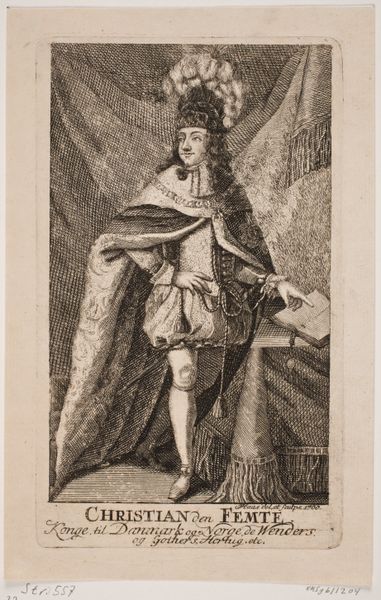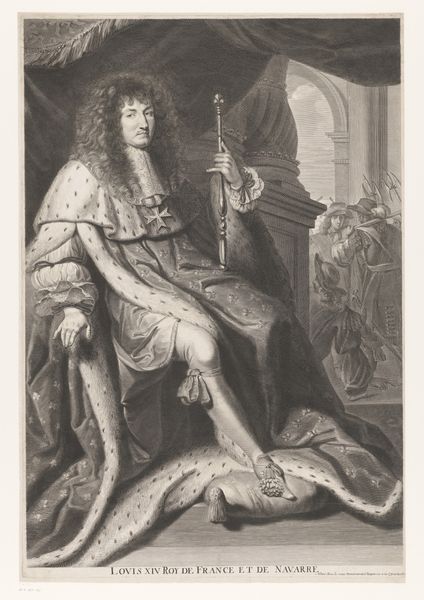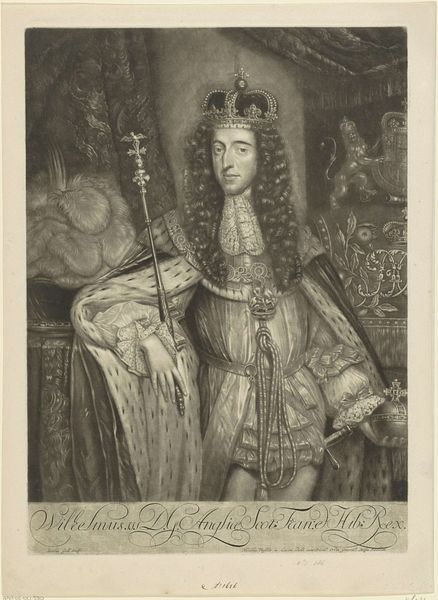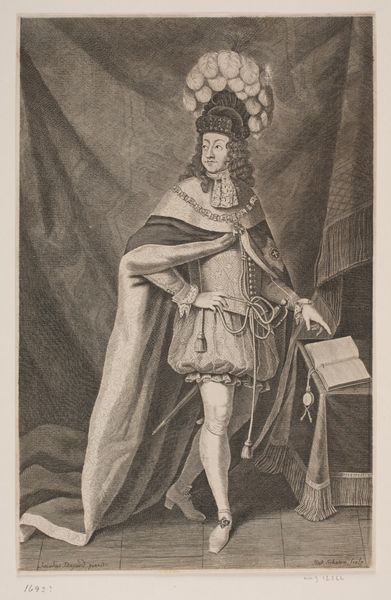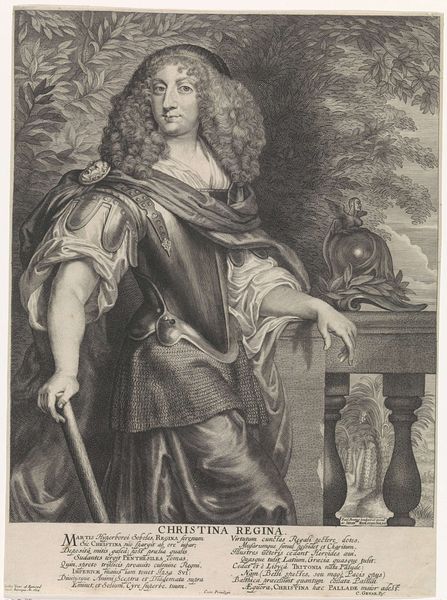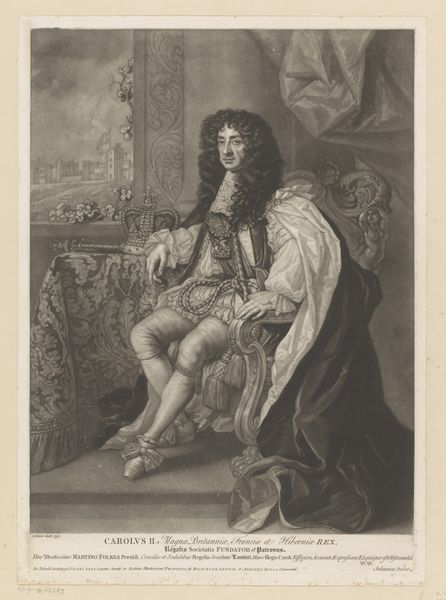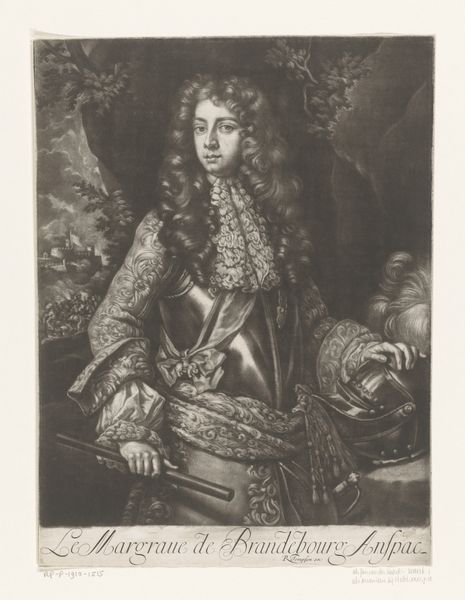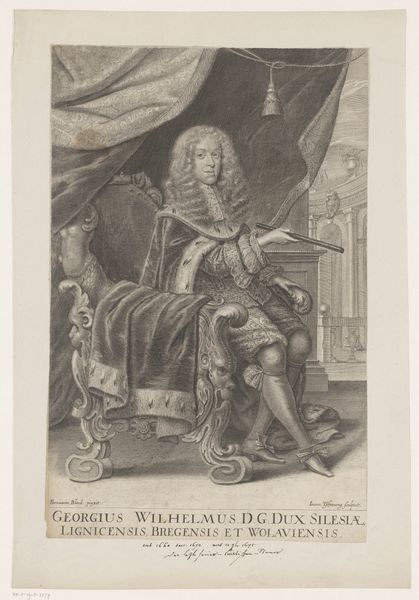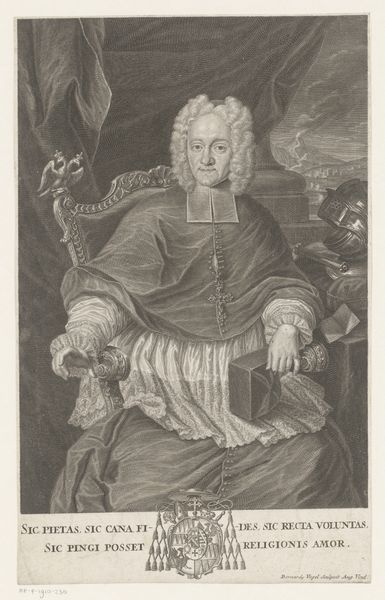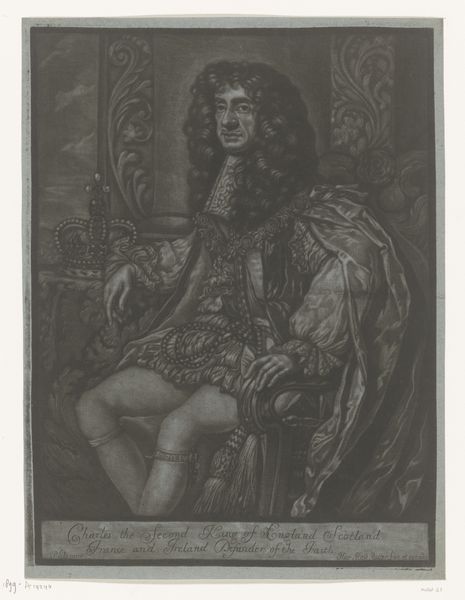
print, metal, engraving
#
portrait
#
baroque
# print
#
metal
#
old engraving style
#
caricature
#
portrait drawing
#
history-painting
#
engraving
Dimensions: height 439 mm, width 319 mm
Copyright: Rijks Museum: Open Domain
Curator: Here we see a piece entitled "Portret van Willem III, prins van Oranje", made by Jacob Gole, dating sometime between 1688 and 1724. It is an engraving. I must say it is quite grand in person. What are your immediate impressions? Editor: My first thought is the overwhelming density of symbols of power. It feels staged and performed in ways that tell us so much about the period, even now. The portrait appears rigid, the embodiment of monarchical authority... somewhat unsettling, to be honest. Curator: Absolutely, I find the iconography fascinating! The crown, the orb, the scepter – all communicating a carefully constructed image of kingship. And yet, it speaks to the longer symbolic history of crowns. One that began long before Willem. Editor: Right, there's a calculated visual program here. The subject, of course, embodies it. There is armor and robes as an attempt at the embodiment of masculinity and authority. But how does the symbolic armor contend with an aesthetic style focused on Baroque elegance? Curator: Well, the Baroque flourish can also symbolize wealth and status. This print would be a relatively affordable way for people to access the imagery of power, disseminating the image of William III across a broader audience. This touches on an important thread concerning democratization through symbols. Editor: That's a compelling point. These weren't neutral images; they shaped perceptions and cemented power structures, right? We must acknowledge their political impact. We are still dealing with this. Curator: I would not disagree. It is not just about documenting likeness but shaping it into something iconic and lasting. One sees continuity and change through it. From metal die to digital rendering and back again, right? Editor: Indeed. Looking at this image forces us to reckon with how these historical power dynamics continue to influence the present. Understanding their symbols allows for interrogating existing social structures. That is always a valuable opportunity. Curator: It causes one to contemplate on legacy. The artist Jacob Gole knew this piece would be viewed for years to come, across cultures and interpretations. It's fascinating how a singular work can encapsulate such profound insights, even hundreds of years later. Editor: Yes, art becomes this layered document—history, symbolism, politics all intertwined and then refracted by the present moment. It shows a need to learn, unlearn and learn again the semiotics of symbols in the arts.
Comments
No comments
Be the first to comment and join the conversation on the ultimate creative platform.


